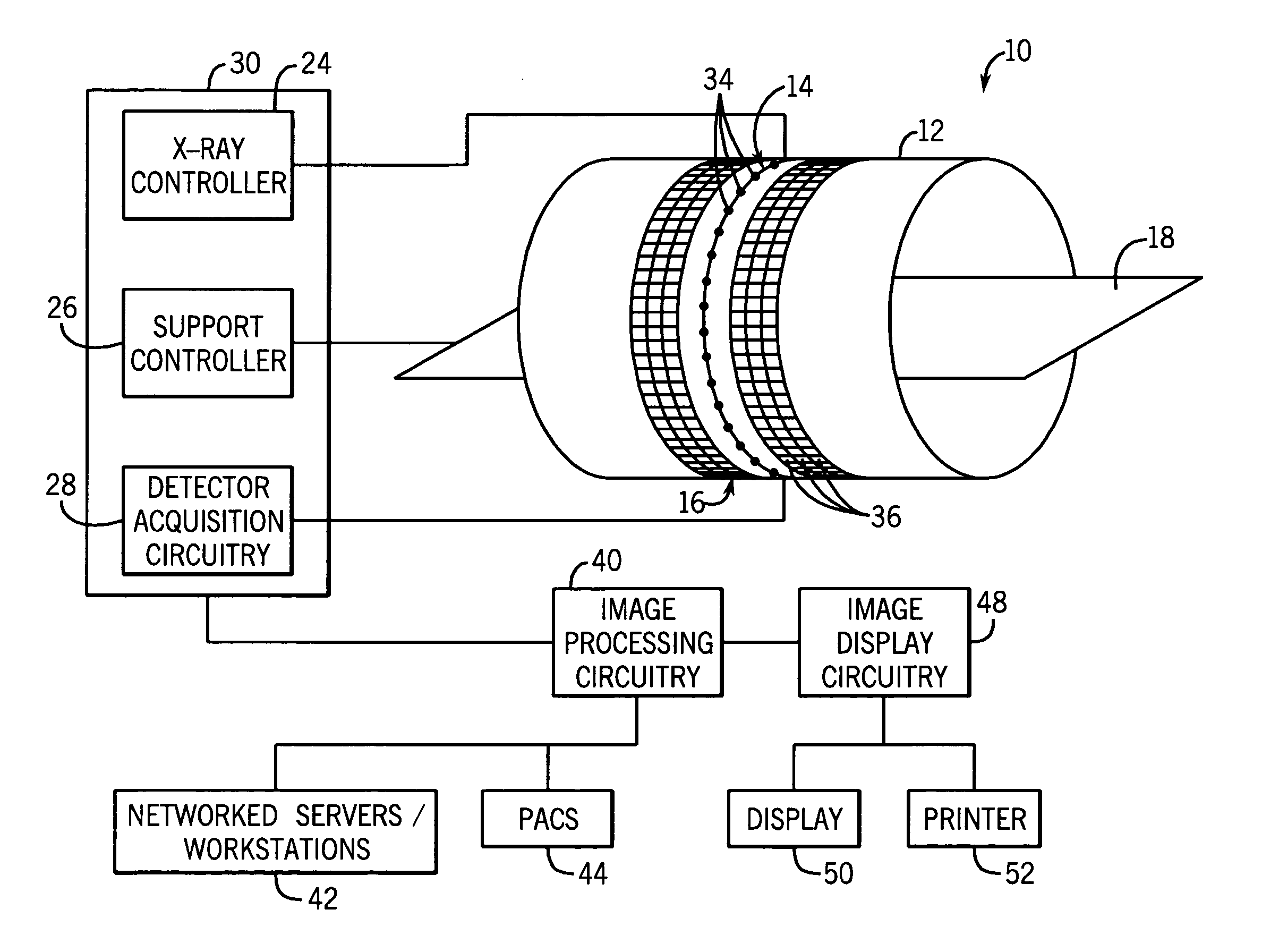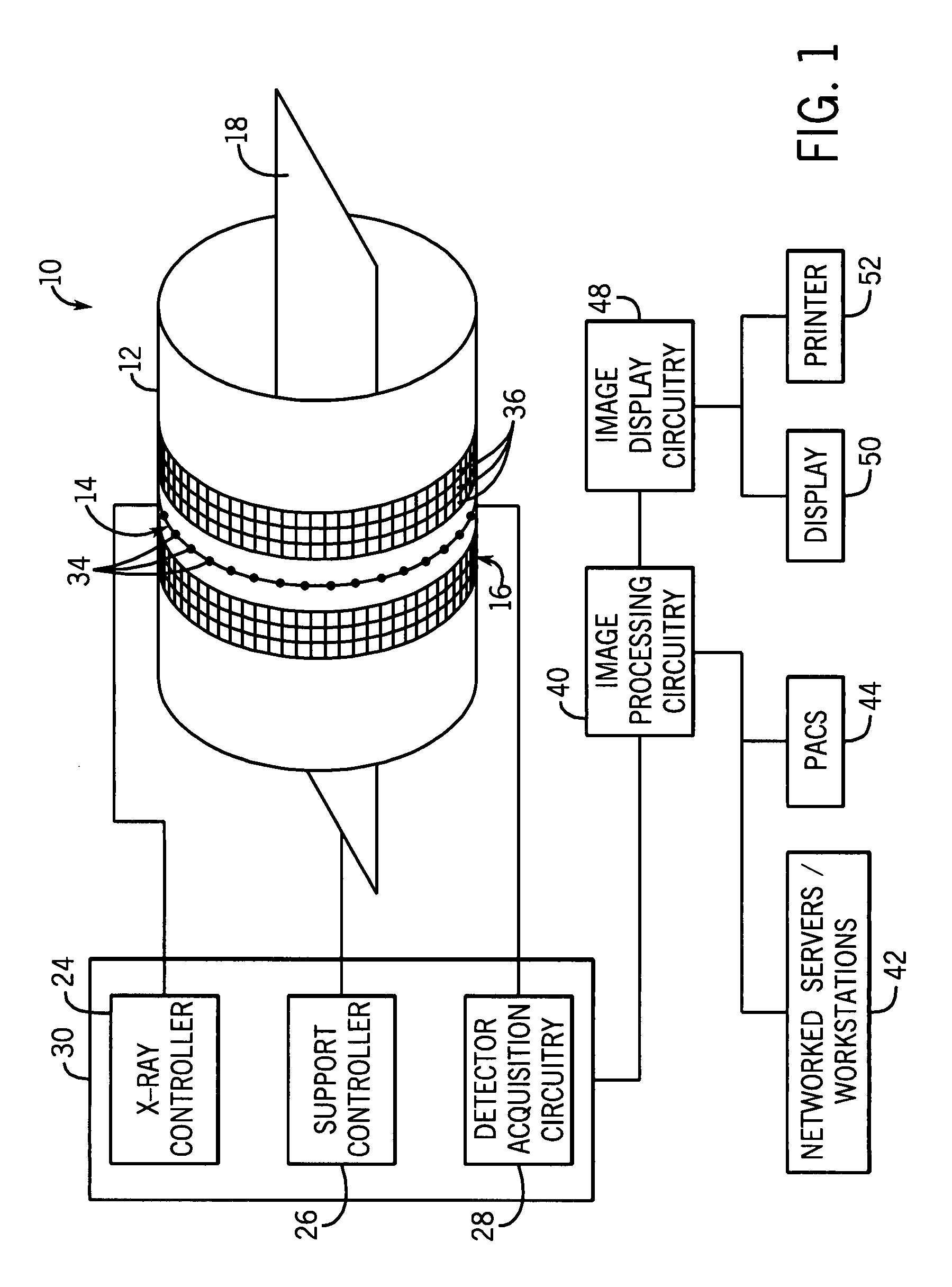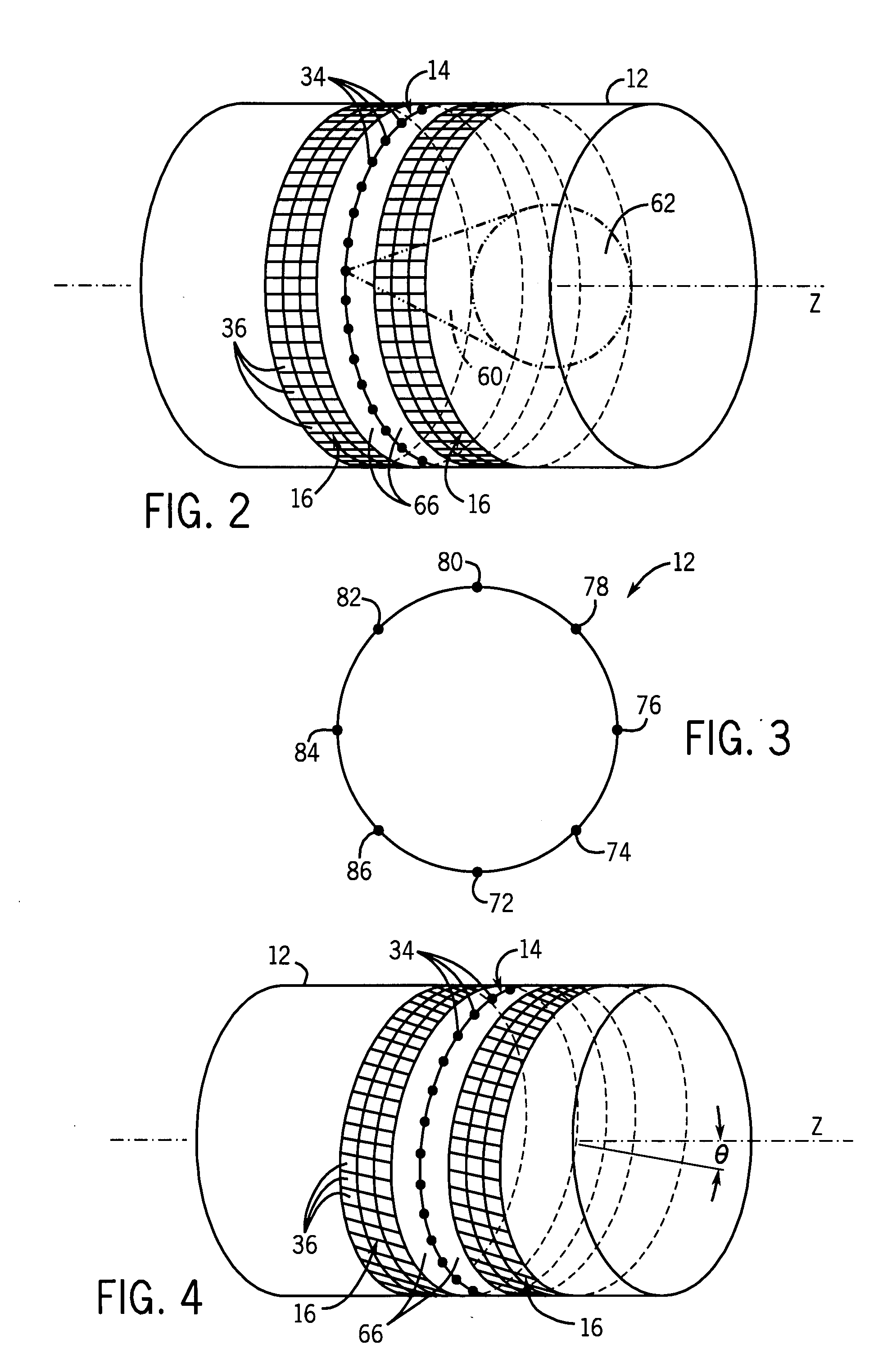Reconstruction of CT projection data
a projection data and reconstruction technology, applied in the field of computed tomography (ct) imaging systems, can solve the problems of increasing complexity of mechanical balancing systems, unsuitable rotational systems for applications requiring good temporal resolution or high throughput, and prone to mathematical incompleteness
- Summary
- Abstract
- Description
- Claims
- Application Information
AI Technical Summary
Problems solved by technology
Method used
Image
Examples
Embodiment Construction
[0027]Referring to now FIG. 1, a computed tomography (CT) system is illustrated and designated generally by reference numeral 10. The CT system 10 comprises a scanner 12 formed as a cylindrical gantry and containing one or more stationary and distributed sources 14 of X-ray radiation and one or more stationary digital detector arrays 16, as described in greater detail below. The scanner 12 is configured to receive a support structure 18 passing through the imaging volume and upon which objects to be scanned are positioned. The support structure 18 can be moved through an aperture in the scanner 12 to appropriately position the object or objects in an imaging volume scanned during imaging sequences. In one embodiment, the support structure 18 is a conveyor belt configured to provide continuous or near-continuous movement of objects undergoing imaging through the scanner 12. In other embodiments, the support structure 18 is a table or support configured to move an object or patient in...
PUM
 Login to View More
Login to View More Abstract
Description
Claims
Application Information
 Login to View More
Login to View More - R&D
- Intellectual Property
- Life Sciences
- Materials
- Tech Scout
- Unparalleled Data Quality
- Higher Quality Content
- 60% Fewer Hallucinations
Browse by: Latest US Patents, China's latest patents, Technical Efficacy Thesaurus, Application Domain, Technology Topic, Popular Technical Reports.
© 2025 PatSnap. All rights reserved.Legal|Privacy policy|Modern Slavery Act Transparency Statement|Sitemap|About US| Contact US: help@patsnap.com



